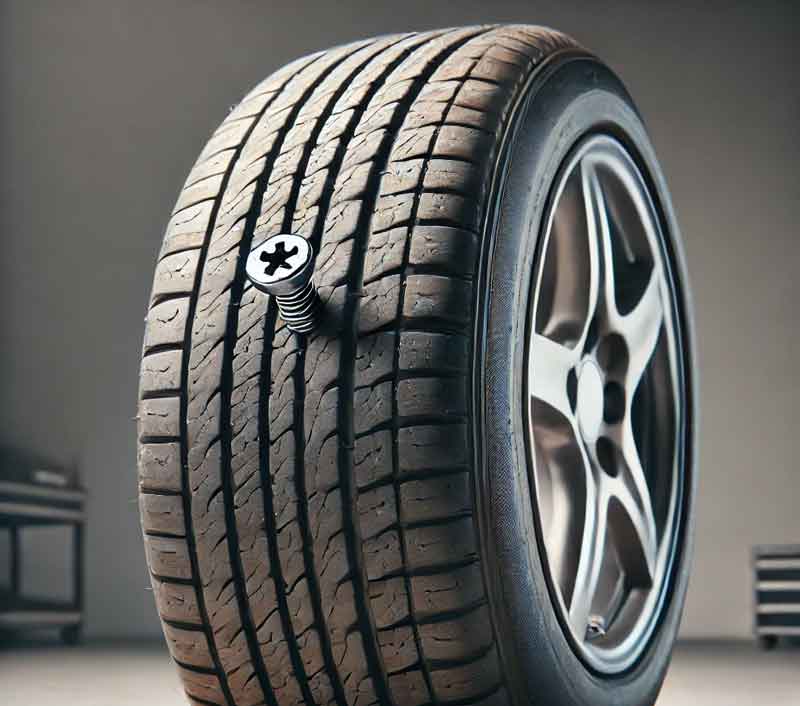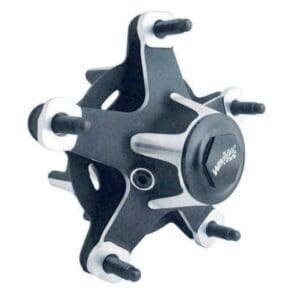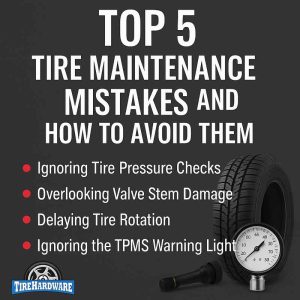When you discover a punctured tire, your first question might be: Should I use a patch or a plug? Both methods can repair a tire, but each has its pros and cons. This guide will explore these differences and help you decide the best solution for your situation.
Tire Plugs: Quick and Convenient
Pros of Tire Plugs:
- Quick Installation: Tire plugs can be installed in minutes without removing the tire from the wheel.
- Cost-Effective: Plugs are usually less expensive than patches and can be done with minimal tools.
- Temporary Solution: Ideal for quick, emergency repairs on the go.
Cons of Tire Plugs:
- Not Always Reliable: Plugs can be less reliable for larger punctures or damage near the sidewall.
- Limited Durability: Plugs might not hold up well over time, especially if exposed to varying road conditions.
- Potential Air Leaks: Poorly installed plugs may not completely seal, leading to slow air leaks.
Tire plugs are convenient for small punctures located in the tread area. However, they are generally considered a temporary fix. Over time, the plug may deteriorate or become dislodged, causing the puncture to reopen.
Tire Patches: Durable and Reliable
Pros of Tire Patches:
- Long-Term Solution: Patches provide a more permanent repair by sealing the puncture from the inside.
- Stronger Seal: Patches cover a larger area, offering a more reliable seal against air leaks.
- Better for Larger Punctures: More effective than plugs for larger punctures within the tread area.
Cons of Tire Patches:
- Requires More Time: Patching involves removing the tire from the wheel, making the process more time-consuming.
- Higher Cost: Patch jobs often cost if paying a mechanic.
- Not Recommended for Sidewalls: Like plugs, patches usually should not be used on sidewall damage.
Tire patches provide a more robust solution. The patch adheres to the inner tire surface, sealing the puncture from the inside. This method prevents air and moisture from compromising the tire’s structure, ensuring a longer-lasting repair.
Why Patches Are Often the Best Choice
When choosing between a tire repair patch or a plug, consider the puncture’s size, location, and your long-term needs. Plugs are useful for quick, temporary fixes but lack the durability and reliability of patches.
-
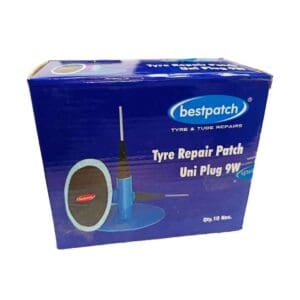 Uni Plug Patch 9W (9W10)$19.20
Uni Plug Patch 9W (9W10)$19.20 -
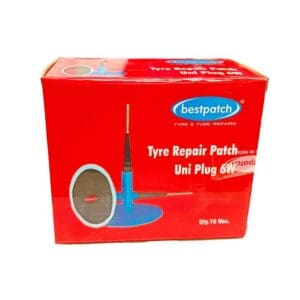 Uni Plug Patch 6W (6W10)$16.99
Uni Plug Patch 6W (6W10)$16.99 -
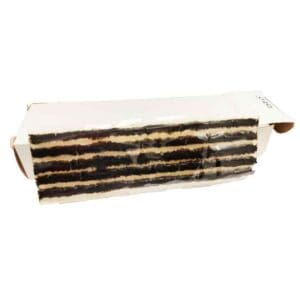 Thick Tubeless Tire Repair Strings – 8″ (ST242)$15.99
Thick Tubeless Tire Repair Strings – 8″ (ST242)$15.99 -
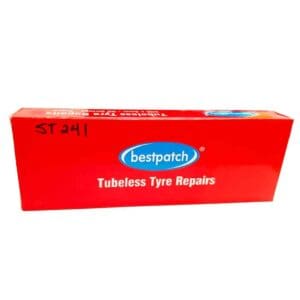 Tubeless Tire Repair Strings – 8″ Thin (ST241)$13.99
Tubeless Tire Repair Strings – 8″ Thin (ST241)$13.99 -
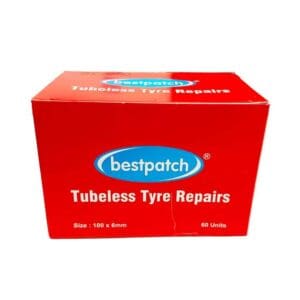 Tubeless Tire Repair Strings – Black (ST240)$12.39
Tubeless Tire Repair Strings – Black (ST240)$12.39 -
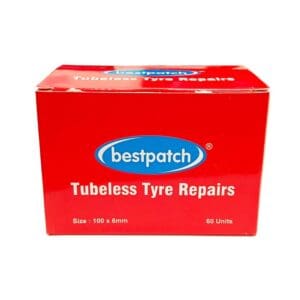 Tubeless Tire Repair Strings – Brown (ST239)$12.89
Tubeless Tire Repair Strings – Brown (ST239)$12.89 -
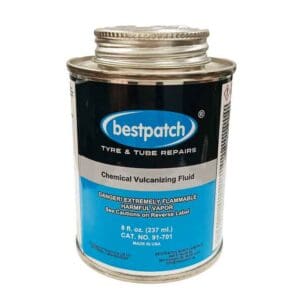 Bestpatch Chemical Vulcanizing Fluid (Fast Dry Rubber Cement) – 91-701$6.99
Bestpatch Chemical Vulcanizing Fluid (Fast Dry Rubber Cement) – 91-701$6.99 -
 TRUFLEX Bufsol Pre-Buff Cleaner – 816F/QT$18.99
TRUFLEX Bufsol Pre-Buff Cleaner – 816F/QT$18.99 -
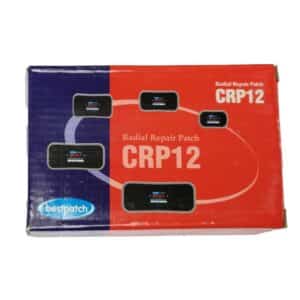 Bestpatch Best Radial Tire Repair Patches – QTY 10 (CRP12)$17.78
Bestpatch Best Radial Tire Repair Patches – QTY 10 (CRP12)$17.78
Patches offer a more secure, long-term solution, especially for larger punctures located within the tread area. While they require more time and effort, patches provide peace of mind knowing that your repair is more durable and less likely to fail. An ideal solution in some cases is to use both a plug and patch for a tire repair.
At TireHardware.com, we recommend using patches for most tire repairs. They offer superior reliability and durability, ensuring your tires remain safe and functional for a longer period.
Remember, a well-repaired tire not only saves you money but also keeps you safe on the road. Choose the right repair method for your needs and drive with confidence.
Explore our range of high-quality tire patches and repair kits today at TireHardware.com. Your safety is our priority.

